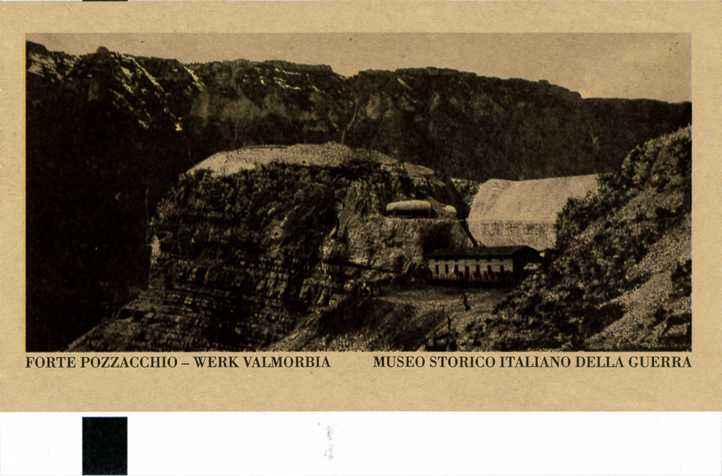Keep In Touch!
(Part Two)
By ELENA NOT
PERSONALISATION AFTER THE VISIT: KEEPING A PERSONAL CONNECTION WITH THE EXHIBITION
How to keep a connection with visitors that have just experienced your museum exhibition? Will they recall what they have seen, heard, experienced for long? Will they ever get in touch with the online resources that the museum offers or will they suggest others to come and visit?
Building a long-lasting personal relationship with visitors and promoting their engagement also after the visit is one of the most challenging endeavors museums face. In meSch we are exploring how post-visit souvenirs generated in a personalized form – according to what visitors have experienced during their visit – can reinforce their positive attitude towards the experience, favor memory and sharing and enable further curiosity and exploration.
POSTCARDS FROM TODAY´S VISIT
In the Atlantic Wall exhibition at Museon earlier this year, meSch experimented with the printing of a personalized postcard on which the experience of visitors is graphically reflected: the postcard shows information including their chosen language (Dutch or English), the perspective from which they received information (German Soldiers, Dutch Civil Servants or Dutch Citizens), and the 3 locations within the exhibition with which they spent the most time interacting.
Within a more recent meSch augmented exhibition at the Museo Storico Italiano della Guerra described in a previous blog post our investigation about the opportunities of generating data souvenirs has been further extended by exploiting technologies in the field of adaptive natural language generation. At the end of the visit to the Artilleries section of the museum that hosts the meSch installation, upon the return to the ticket office of the activating “pebble”, visitors are given a souvenir postcard.

The front of the postcard, with a historical picture that evokes the topic of the exhibition
The front of the postcard contains a picture of Forte Pozzacchio, the last Austro-Hungarian fortress built to protect the Italian front during WWI, which is the topic around which the multimedia narrations presented in the exhibition revolve. The back of the postcard contains a short textual summary of what the visitor has experienced.
PERSONALIZING THE MESSAGE TO THE VISITOR
Based on the logs collected by the system, the application running at the check-out station located at the ticket office composes a personalized text that (i) reflects the order of visit, (ii) mentions the names of the voices that the visitor has heard, (iii) contains optional phrases depending on what the visitor has actually experienced, (iv) guarantees proper syntactic and lexical cohesion of the text after the dynamic assembling. A final sentence invites visitors to connect to the museum website to find the stories and the bibliographic references of the original documents from which the narrations where extracted. A stamp with the current date completes the souvenir.
As a result of the personalization, different visitors who have experienced the meSch installations in alternative ways receive different postcards.

Sample personalized postcard with different text that reflects different experiences
The early feedback we collected during the first week of evaluation of the meSch installation at Museo della Guerra was very positive: visitors seem to highly appreciate the format of the souvenir (a postcard to be retained for personal memory or to be shown to others), the image (that recalls the general topic of the exhibition), the narrative summary (that recalls the actual experience), the opportunity to find more online.
FURTHER EXPLOITING THE PERSONALIZATION POTENTIAL
Personalization technology opens up a large range of opportunities for getting in a more direct contact with visitors. Indeed, the possibility of tracing what users do and of adapting the system behavior accordingly can be exploited by exhibition designers to experiment with ways of meeting different preferences and interests.
In the case study of the personalized postcards for the Museo della Guerra, we investigated this potential by experimenting with the generation of alternative types of texts and layouts for the souvenir, and by asking to visitors for their opinions and preferences during post-visit interviews.


Experimenting with a different layout and language for the postcard (left) and with A4-sized leaflets (right)
We discovered that the postcards generated with a layout that leaves space for the address, so that the postcard can also be sent, encountered the highest preference of visitors. Postcards where the summary of visit is replaced by just one excerpt of heard content would be acceptable only if the included story is the one actually preferred by the visitor. Longer paper leaflets including a more detailed summary of the visit with the transcription of all the heard stories are instead considered less engaging, a bit old fashioned, better replaced by online resources for follow-up exploration.
WHAT COMES NEXT
The generation of an effective personalized data souvenir is indeed the bridge to the next step of interaction with visitors: offering them personalized resources for remembering and expanding their experience online. The meSch researchers are currently investigating how to design an effective visualization interface for visitors to keep their personal connection with the museum visit.
Project dates
Publications
Research by
Partners & Stakeholders
Funders
Funders


